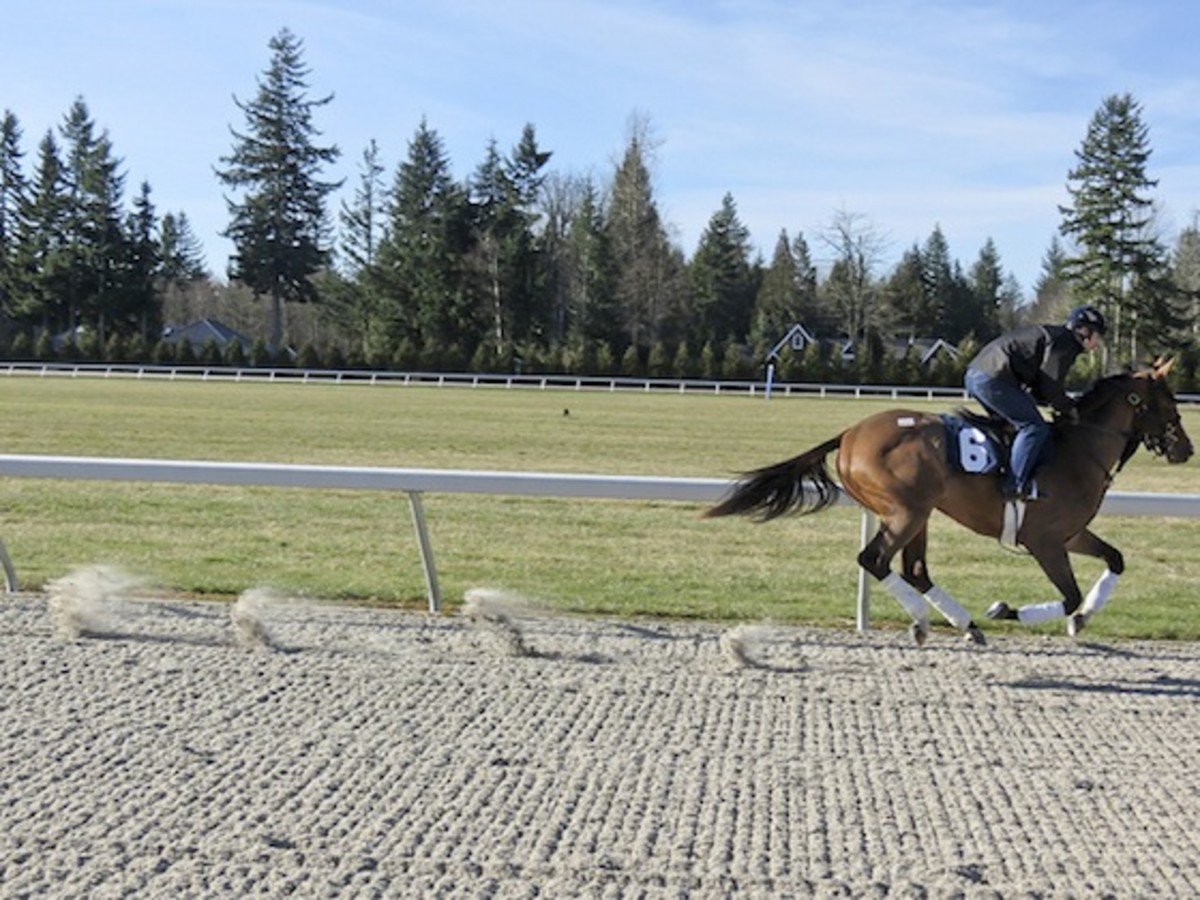Changes in Racing Medication Protocol Recommended as Corticosteroid Experts Advise Requiring Withdrawal Time Before Racing
- March 10, 2017
- ⎯ Fran Jurga
The following announcement contains specific medical information regarding the use of a group of compounds known as “corticosteroids”. While these statements refer to recommendations that have not been adopted (and may not be adopted) by individual racing commissions around the United States, this is important information that will affect how horses are prepared for racing in states or jurisdictions that do adopt these guidelines.

Background: corticosteroids are a class of powerful anti-inflammatory drugs that are injected into a horse’s fetlocks, coffin joints, hocks, etc., depending on the site of lameness and type of inflammation. They allow localized treatment of the condition but have been viewed as controversial by critics, and necessary by advocates.
Please read a background explanation of the use of corticosteroids for equine lameness on the website of Colorado State University College of Veterinary Medicine Orthopedic Research Center and authored by Dr. Wayne McIlwraith.
To insure the accuracy of this article, it is being printed verbatim:
The Racing Medication and Testing Consortium (RMTC) recently approved minimum withdrawal time recommendations for corticosteroids. These recommendations were based on recently completed work funded in-part by RMTC and conducted at the University of Pennsylvania, University of California-Davis Kenneth L. Maddy Laboratory and HFL Laboratory-Kentucky and other corticosteroid research conducted both in the U.S. and abroad.
The recommendations were developed during an RMTC hosted Corticosteroid Experts Conference in Anaheim, California, on November 30. The meeting brought together qualified individuals with professional expertise in key areas with the goal of providing a comprehensive plan for regulating corticosteroid use in horse racing to protect equine health and welfare. Participants included analytical chemists, veterinary pharmacologists, veterinary surgeons, racing regulatory veterinarians, and practicing racetrack veterinarians.

Among the recommendations was a prohibition on intra-articular use of corticosteroids within 7 days of a race.
“This recommendation takes into consideration the concerns expressed by many participants at the conference about the proximity of intra-articular injections to race day,” said RMTC Executive Director Dr. Dionne Benson.
The experts also recommended a 72-hour withdrawal time for dexamethasone, a commonly used short-acting corticosteroid that can be administered intravenously, intramuscularly and orally. Other short-acting corticosteroids would have similar restrictions.
“These recommendations represent the work of a number of laboratories and veterinarians both here in the U.S. and overseas,” said Benson. “This work was supported across the industry through funds contributed to the RMTC for research as well as the experts’ time. Without the industry’s commitment, these recommendations would not be possible.”
The group recognized that the recommendations will fundamentally change the use of corticosteroids and veterinary practice in racing. Accordingly, the group recommended that these changes be accompanied by a grace period to allow veterinarians time to adjust their veterinary practices and to allow trainers time to adjust their training practices to comply with the new regulations.
“The goal in bringing these experts together was to develop scientifically-based and enforceable recommendations for the regulation of corticosteroids,” said RMTC Chairman Dr. Robert Lewis.
“The group’s recommendations allow for practitioners to use corticosteroids where medically indicated for treatment of the horse and remove the pressure of treatment based upon whether a horse is entered to race.”
The RMTC approved these recommendations earlier this month and forwarded them to the Association of Racing Commissioners International for review.
The RMTC consists of 25 racing industry stakeholders and organizations that represent Thoroughbred, Standardbred, American Quarter Horse, and Arabian racing. The organization works to develop and promote uniform rules, policies, and testing standards at the national level; coordinate research and educational programs that seek to ensure the integrity of racing and the health and welfare of racehorses and participants; and protect the interests of the racing public.
For additional information, visit the RMTC website at rmtcnet.com or contact Hallie Lewis, RMTC director of communications, at (859) 224-2848.





